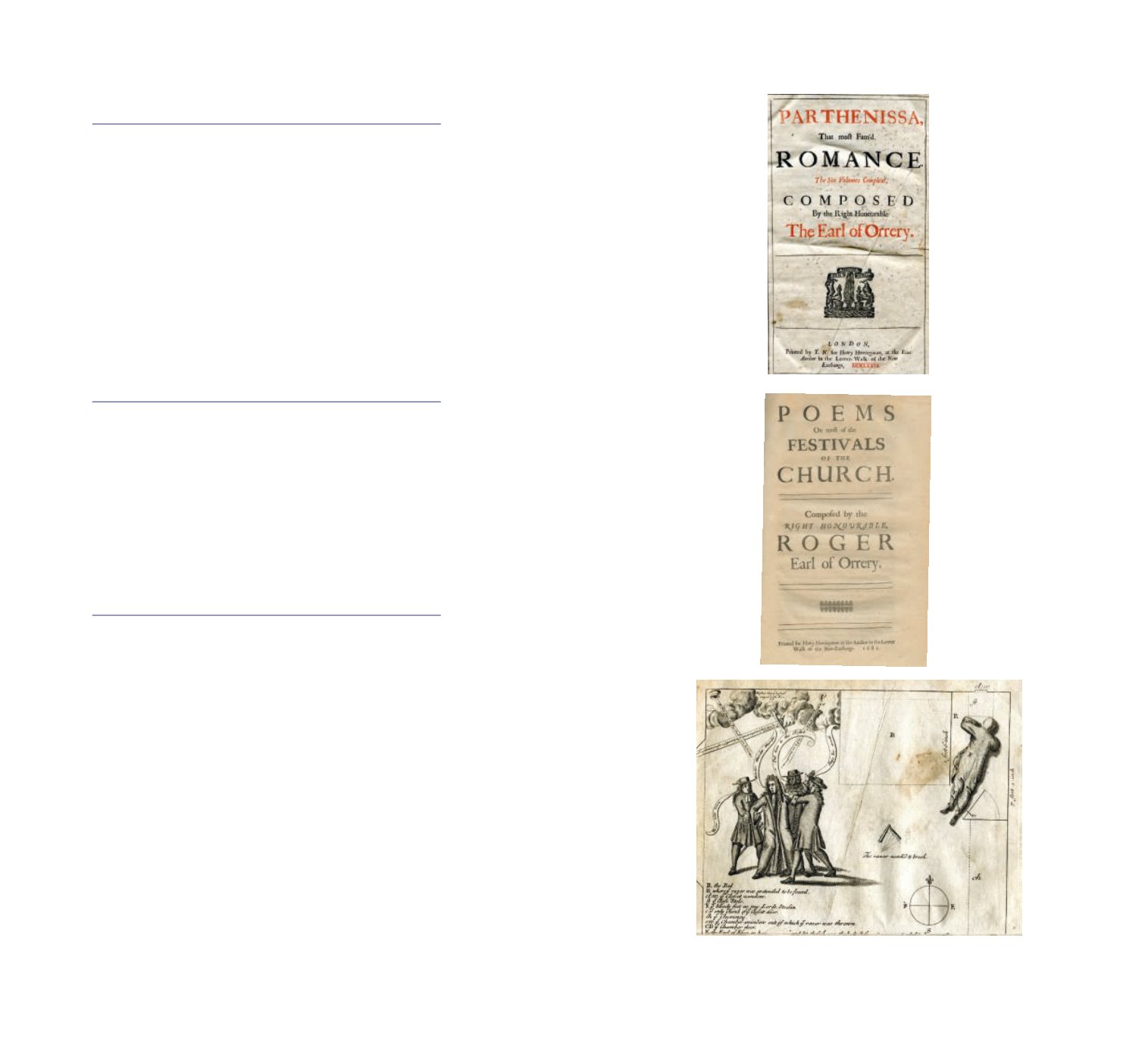

22
info@adams.ie43
BOYLE ROGER, EARL OF ORRERY
Parthenissa that most fam’d romance. The six volumes complete - London: 1676. Folio. pp.
[iv], 808. A very good copy in professionally rebacked old calf. Wing O 490. Sessions X pages
72/76.The earliest instance of a “romance” credited to an Irish writer and this 1st completed
edition had rendered it accessible to the researcher. It is also said to be the first English lan-
guage romance in the style of the 17th-century French writers of heroic romance, Gauthier de
Costas de la Calprenède and Madeleine de Scudery. The influence of de Scudery is especially
noteworthy in Boyle’s use of contemporary allusions in this work which deals with two Princes,
Artabanes and Surena competing for the love of Parthenissa. Sweeney 621. The John Robert
Mowbray copy.
€250 - €350
44
BOYLE ROGER, EARL OF ORRERY
Poems on most of the Festivals of the Church - Cork and London: 1681. Folio. pp. [vi], 2 - 80.
A fine copy in modern full black crushed morocco. Wing O 495. The titlepage and three pre-
liminary leaves were printed in London for Herringman but that apart, the body of the work,
according to Henry Bradshaw, is from the press of William Smith of Cork. Idiosyncratic is a
kindly description of the fonts of type used by Smith. Sweeney 622.
€200 - €250
46
BRADDON, LAWRENCE
Essex’s innocency and honour vindicated; or, murther, subornation, perjury, and oppresssion
justly charged on the murtherers of .... Arthur (late) Earl of Essex - London: 1690. 4to. pp. [ix],
62 (double column). With engraved frontispiece. A good copy in modern quarter calf. Wing B
4101.
The author, a lawyer, was together with Hugh Speke sent to prison for spreading rumours that
the earl of Essex who had earlier served a five year stint as Irish lord lieutenant had not com-
mitted suicide in the Tower of London but rather that he had been murdered. On his release
from prison in 1689, with William and Mary now on the throne, Braddon felt it safe to put his
theory into print. In a quite remarkable fore-runner to the modern detective story, he provides
as frontispiece a drawing of the prison cell which, amongst other details, places the alleged
suicide weapon far beyond the reach of the dead man. Thirty five years later Braddon was
still arguing his case with an attack on the manner in which the event had been portrayed in
bishop Gilbert Burnet’s History of his own Times. The earl left a bridge across the river Liffey
connecting Parliament Street and Capel Street which serves as a lasting memorial of his period
of office here. Sweeney 637.
€80 - €120
Lot 43
Lot 44
Lot 46



















